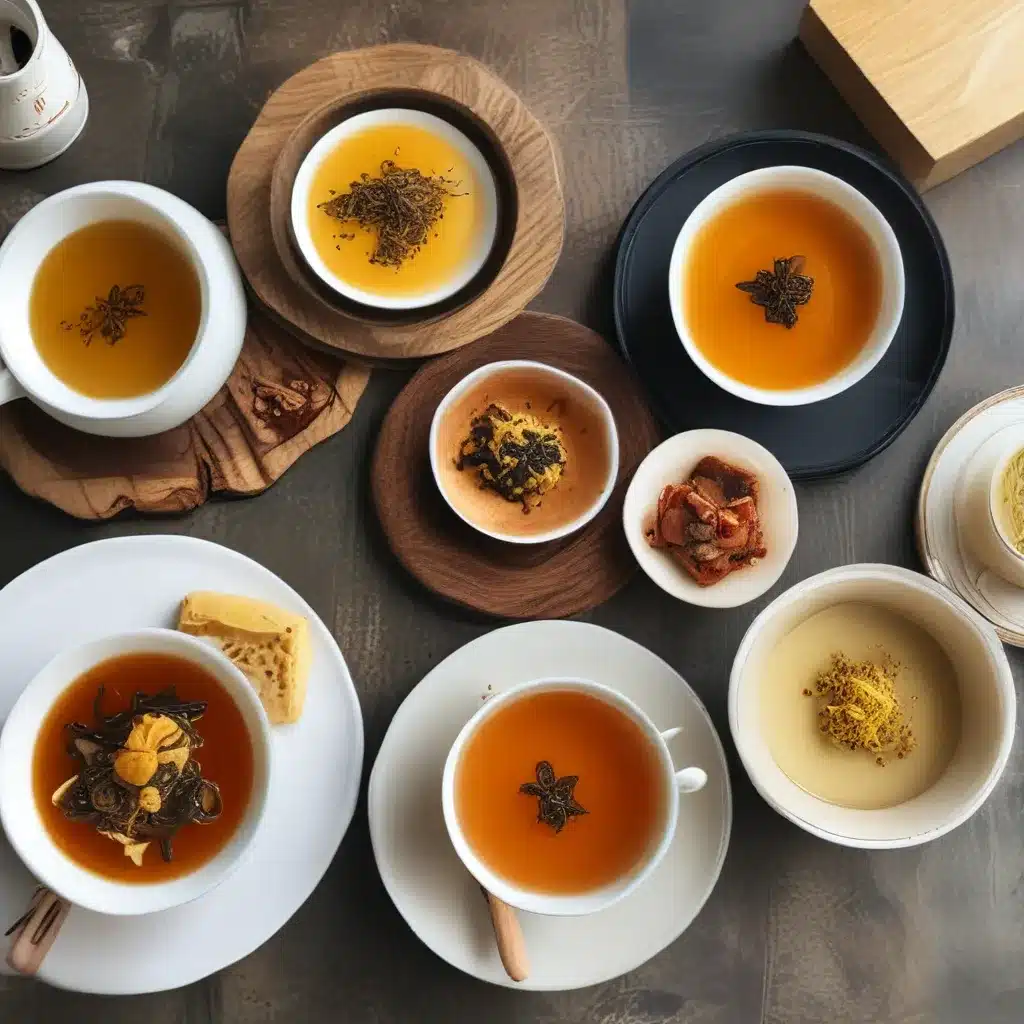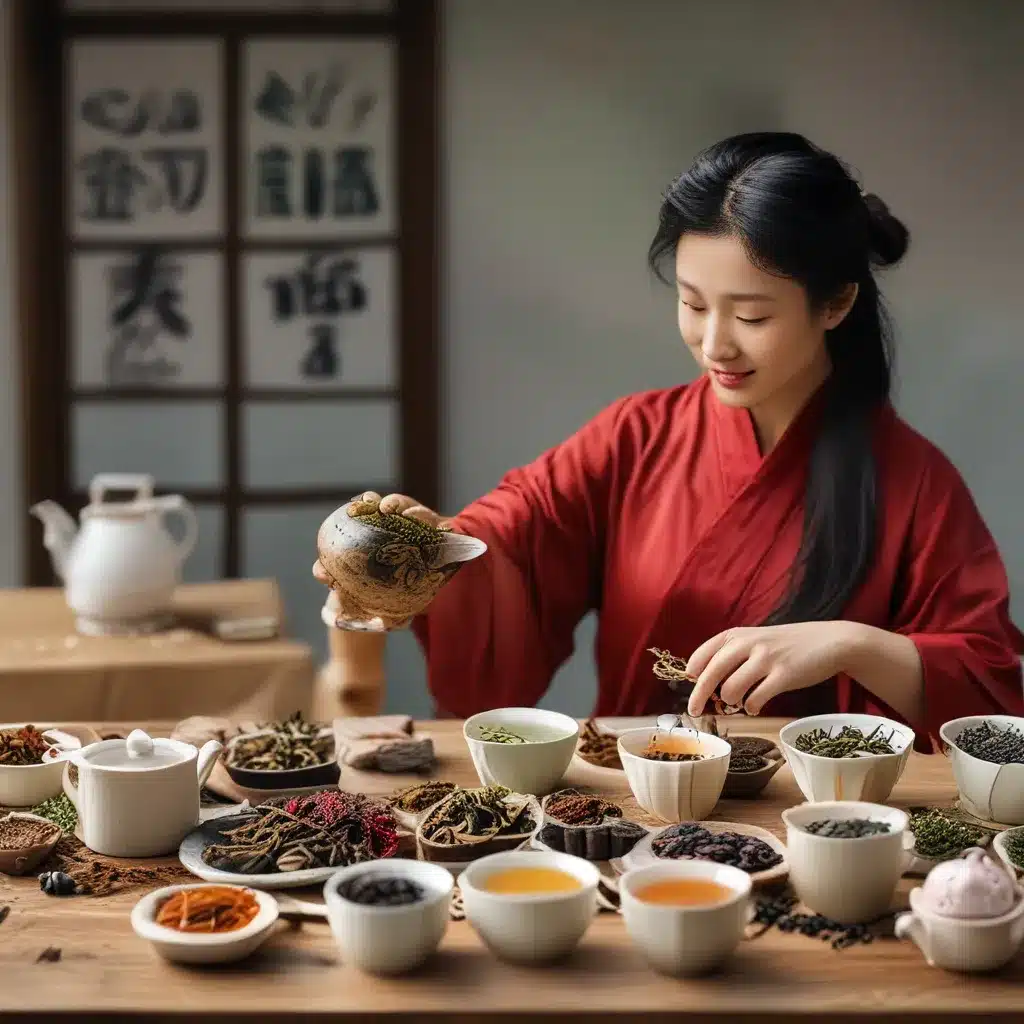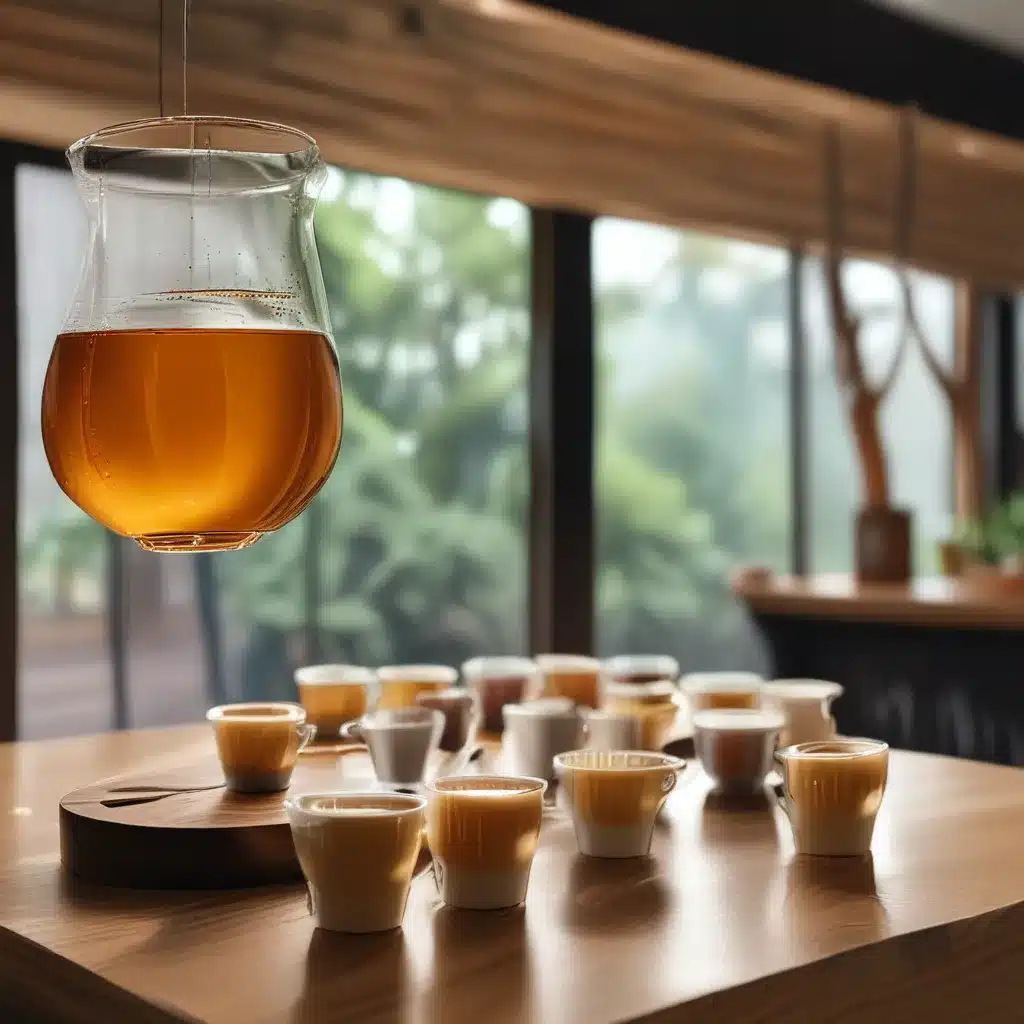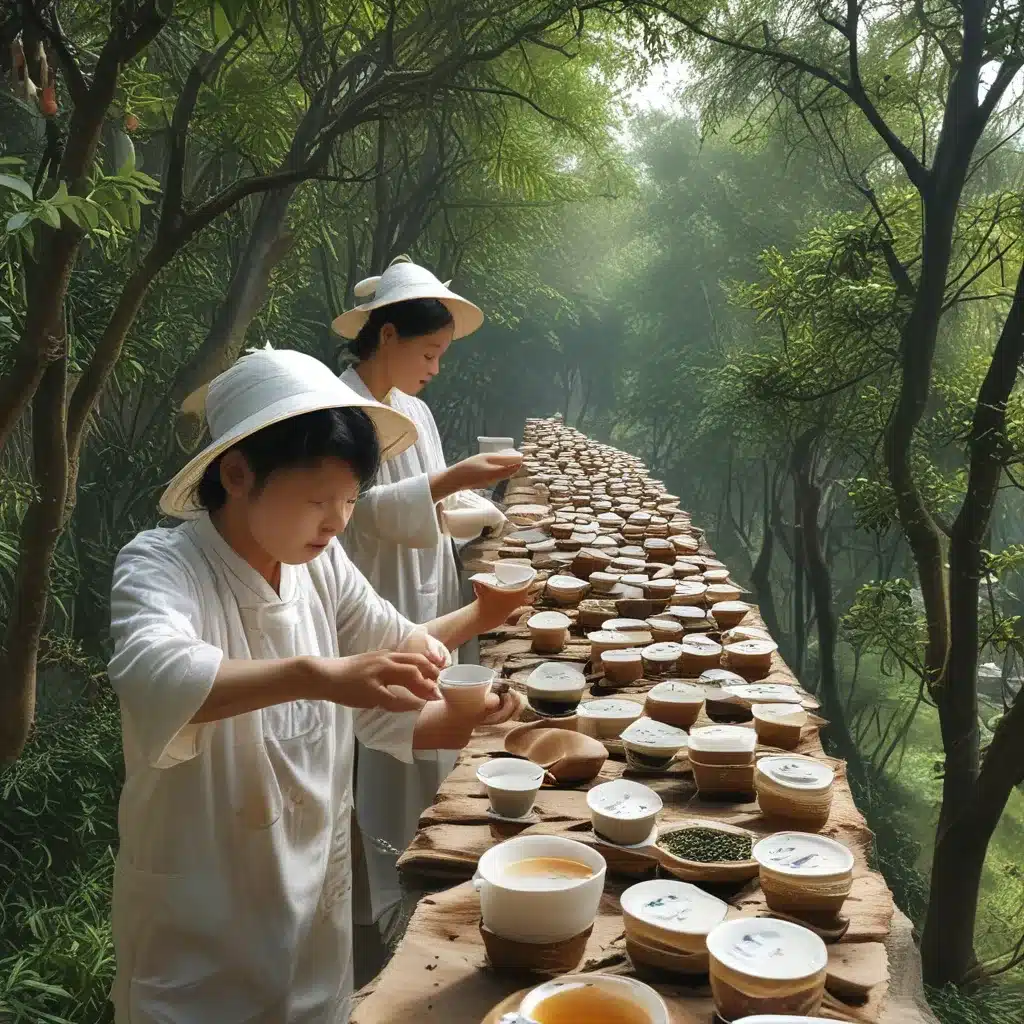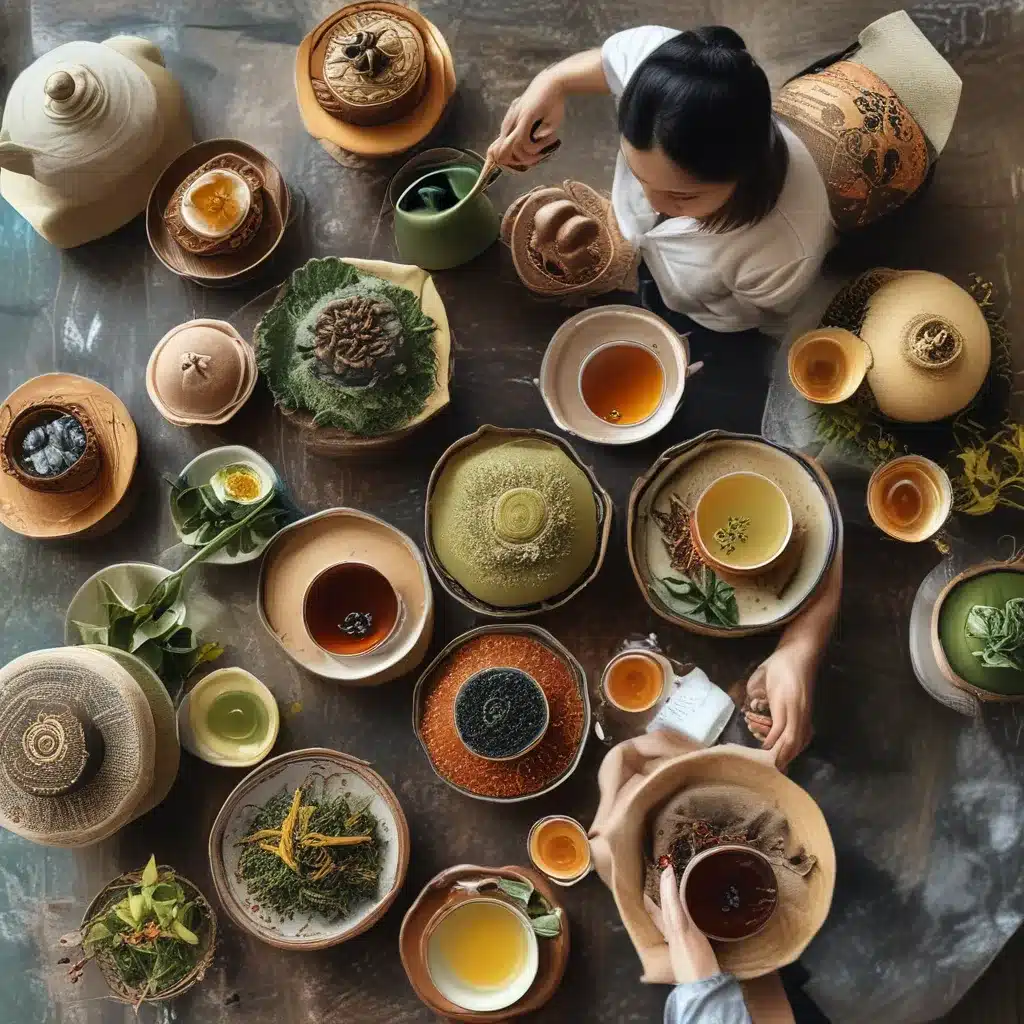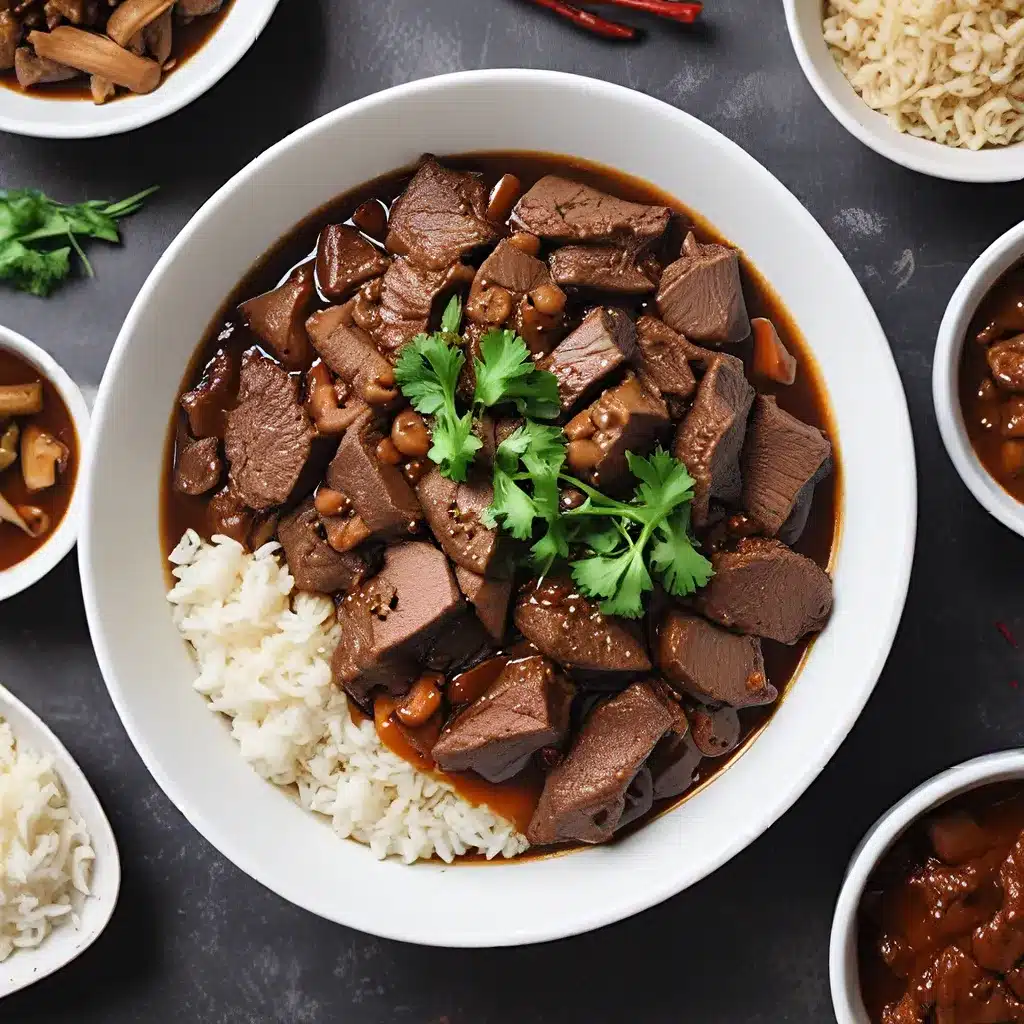
Discovering the Depths of Shanghai’s Signature Dish
As I step into the bustling kitchen of One Dragon Restaurant, the aromas of simmering soy sauce, star anise, and tender beef instantly transport me to the culinary heart of Shanghai. This city, with its rich history and dynamic food culture, has long been renowned for its mastery of braised beef dishes, and I’m about to embark on a delectable journey to uncover the secrets behind this beloved local specialty.
Drawn to the mouthwatering promise of fork-tender meat and a depth of flavor that can only be achieved through patient simmering, I’ve made it my mission to dive deep into the world of Shanghai-style braised beef. What I discover is a captivating story that weaves together the region’s unique ingredients, time-honored techniques, and the passionate chefs who keep this tradition alive.
Tracing the Roots of Shanghai’s Braised Beef
To understand the significance of this dish, I first need to explore its origins. As it turns out, the roots of Shanghai-style braised beef can be traced back to the city’s vibrant history as a hub of culinary innovation and cultural exchange. According to culinary experts, the dish emerged as a reflection of Shanghai’s cosmopolitan nature, where the flavors and cooking methods of various regional cuisines converged to create something uniquely its own.
“Shanghai’s location on the Yangtze River Delta allowed it to become a melting pot of culinary influences,” explains Chef Liang, the mastermind behind the braised beef at One Dragon Restaurant. “Traders and immigrants from all over China brought their regional specialties, which were then adapted and reimagined to suit the local palate.”
One of the key elements that sets Shanghai-style braised beef apart is the use of dark soy sauce, a signature ingredient in the city’s cooking. “Dark soy sauce lends a rich, caramelized flavor that is simply unmatched,” Chef Liang tells me, his eyes sparkling with enthusiasm. “It’s the backbone of this dish, providing a deep, complex base that allows the other flavors to shine.”
Mastering the Art of Slow Braising
As I delve deeper into the preparation of this dish, I’m struck by the meticulous attention to detail and the unwavering commitment to tradition. “Slow and steady is the name of the game when it comes to braising beef Shanghai-style,” Chef Liang reveals, guiding me through the intricate process.
The journey begins with carefully selected cuts of beef, each meticulously trimmed and portioned to ensure optimum tenderness. “We use a combination of beef chuck and shank, which have the perfect balance of marbling and connective tissue to withstand the long cooking process,” he explains. “The key is to let the beef braise low and slow, allowing the flavors to meld and the meat to become fall-apart tender.”
The next step is the aromatic braise, a symphony of spices and seasonings that infuse the beef with layers of complexity. In addition to the signature dark soy sauce, Chef Liang incorporates a medley of fragrant ingredients, including star anise, cinnamon, fennel, and a touch of brown sugar. “The spices and aromatics work together to create a depth of flavor that is simply irresistible,” he says, stirring the simmering pot with a gentle hand.
One of the most fascinating aspects of this process is the way the beef is seared and then slowly submerged in the flavorful braising liquid. “We start by browning the beef to lock in the juices and develop a rich, caramelized crust,” Chef Liang explains. “Then, we gently lower the heat and let the meat braise for hours, basting and turning it occasionally to ensure an even distribution of the flavors.”
Uncovering the Art of Presentation
As the hours tick by and the aroma of the braised beef intensifies, I find myself eagerly anticipating the final reveal. When the time comes to plate the dish, I’m amazed by the level of care and artistry that goes into its presentation.
“Serving Shanghai-style braised beef is an art form in itself,” Chef Liang says, carefully arranging the tender slices of meat on a platter. “We want to showcase the beauty of the dish, from the rich, glossy sauce to the delicate ribbons of beef that practically melt on the tongue.”
Alongside the braised beef, Chef Liang adds a selection of carefully chosen accompaniments, each one playing a vital role in the overall experience. “Steamed white rice is the classic pairing, providing a neutral base to highlight the bold flavors of the dish,” he explains. “And we always include braised daikon radish, which acts as a refreshing counterpoint to the richness of the beef.”
As I take my first bite, I’m immediately captivated by the harmony of textures and flavors. The beef is so tender that it yields effortlessly to the gentle pressure of my fork, while the velvety sauce coats my palate with a symphony of umami, sweetness, and a subtle hint of spice. The daikon radish, its once-firm flesh now soft and infused with the braising liquid, provides a welcome crunch and a cleansing burst of flavor.
The Evolution of a Culinary Tradition
But the story of Shanghai-style braised beef doesn’t end there. As I continue my exploration, I discover that this beloved dish has evolved over the centuries, adapting to the changing tastes and preferences of the city’s discerning diners.
“While the core elements of the dish remain the same, we’ve seen a lot of innovation and creativity in recent years,” Chef Liang reveals. “Some chefs have experimented with different cuts of meat, while others have played with the spice profile or incorporated unique vegetables into the braise.”
One such example is the emergence of Shanghai-style braised beef with the addition of preserved mustard greens, a popular ingredient in the region’s cuisine. “The salty, slightly sour notes of the preserved greens provide a wonderful contrast to the richness of the beef,” Chef Liang explains. “It’s a contemporary twist that has become a favorite among our diners.”
Another intriguing development is the rise of fusion dishes that blend the flavors of Shanghai-style braised beef with international influences. “We’ve seen chefs pairing the braised beef with pasta, polenta, or even mashed potatoes, creating unique and unexpected flavor combinations,” he says, his eyes gleaming with excitement. “It’s a testament to the versatility of this dish and the endless possibilities for creative interpretations.”
Savoring the Essence of Shanghai
As I savor the final bites of the exquisite Shanghai-style braised beef before me, I can’t help but marvel at the depth of this culinary tradition. What started as a melding of regional influences has evolved into a signature dish that encapsulates the very essence of Shanghai’s vibrant food culture.
“This dish is more than just a meal; it’s a celebration of the city’s history, its diverse communities, and the passionate chefs who strive to preserve and elevate these time-honored techniques,” Chef Liang says, his voice infused with pride.
And as I step out of the kitchen, my senses still reeling from the mouthwatering experience, I can’t help but feel a newfound appreciation for the art of slow cooking and the power of culinary traditions to transport us to another time and place. It’s a lesson that I’ll carry with me as I continue my culinary adventures, always seeking out the stories that lie beneath the surface of the dishes we love.
So, the next time you find yourself craving the rich, soulful flavors of Shanghai-style braised beef, remember the journey that brought it to your plate. And who knows, perhaps your own culinary odyssey will lead you straight to the heart of this captivating city, where the aroma of simmering spices and the promise of fork-tender meat await, ready to delight your senses and nourish your soul.

